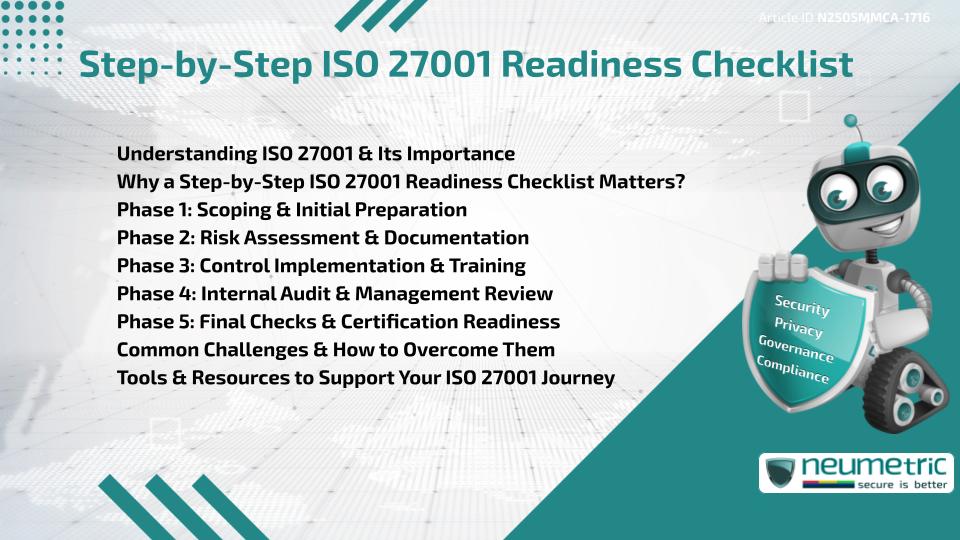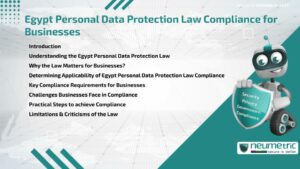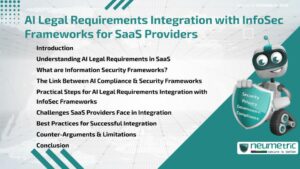Table of Contents
ToggleIntroduction
Preparing for ISO 27001 Certification can feel overwhelming. Organisations of all sizes face the challenge of securing their information systems while navigating complex requirements. A step-by-step ISO 27001 readiness checklist streamlines the journey by outlining all the critical stages needed for effective preparation. Whether you are a small startup or a large enterprise, following a structured path can help ensure that your Information Security Management System [ISMS] is both compliant & effective.
This article offers a practical & easy-to-follow roadmap for organisations aiming to align with ISO 27001 standards, using real-world language & clear milestones.
Understanding ISO 27001 & Its Importance
ISO 27001 is a globally accepted Standard that provides a Framework for managing & securing sensitive information. It provides a Framework for managing sensitive company & Customer Data using an effective ISMS. Implementing ISO 27001 strengthens your organisation’s Information Security, enhances credibility with customers & helps meet Compliance obligations in multiple sectors.
Why a Step-by-Step ISO 27001 Readiness Checklist Matters?
A step-by-step ISO 27001 readiness checklist helps eliminate confusion by breaking the process into manageable tasks. This prevents costly mistakes, ensures key areas are not overlooked & aligns team members under a common security vision.
Without a checklist, it’s easy to miss essential steps like Risk treatment or management reviews. A detailed plan improves consistency, accountability & Audit-readiness.
Phase 1: Scoping & Initial Preparation
Start by defining the scope of your ISMS. This means identifying which departments, locations & systems will be covered. Be specific, because your scope determines how much documentation & security coverage you’ll need.
Key actions:
- Identify Stakeholders & assign roles
- Define ISMS scope clearly
- Perform a preliminary Gap Analysis
- Set a realistic project timeline
Phase 2: Risk Assessment & Documentation
This phase requires you to identify Risks to your information assets & plan How to manage them. ISO 27001 expects a structured Risk Assessment method.
Key actions:
- List information assets & classify them
- Identify Threats & Vulnerabilities
- Analyse impact & likelihood
- Develop a Risk treatment plan
- Document your Statement of Applicability [SoA]
Phase 3: Control Implementation & Training
Once you know your Risks it’s time to implement the relevant controls from ISO 27001 Annex A. These include Access Controls, asset management & Incident Response.
Key actions:
- Apply selected controls from Annex A
- Update Policies & procedures
- Train staff on new security practices
- Keep evidence of implementation
Make sure your controls match your Risk treatment plan. Misaligned controls can lead to Non-Conformities during audits.
Phase 4: Internal Audit & Management Review
An Internal Audit checks if your ISMS is functioning as expected. It must be objective & systematic. Following the Audit, conduct a management review to assess overall performance.
Key actions:
- Schedule & conduct an Internal Audit
- Document Non-Conformities & Corrective Actions
- Conduct a formal Management Review
- Capture meeting minutes & decisions
Phase 5: Final Checks & Certification Readiness
Before the official Audit by a certification body, review your entire ISMS. Ensure all documents are current & staff are prepared.
Key actions:
- Conduct a pre-certification readiness review
- Fix remaining gaps or issues
- Brief all Employees & Stakeholders
- Confirm scope, Policies & SoA accuracy
This final stage ensures your step-by-step ISO 27001 readiness checklist ends in success. Readiness checklists help you avoid surprises & delays during the Audit.
Common Challenges & How to Overcome Them
Even with a checklist, some common pitfalls include:
- Underestimating documentation effort: Use templates to speed things up.
- Lack of staff buy-in: Conduct awareness sessions early.
- Misalignment between Policies & practice: Test procedures regularly.
Consider external consultants if internal expertise is limited. They can provide objective feedback & accelerate progress.
Tools & Resources to Support your ISO 27001 Journey
Using the right tools can make your step-by-step ISO 27001 readiness checklist more manageable, consistent & Audit-ready.
Suggested tools & resources include:
- Policy & Procedure Templates: Pre-formatted documents that provide a foundation for building ISO 27001-compliant Policies & controls.
- Risk Assessment Frameworks: Standardised tools to help identify, analyse & evaluate Risks across your information assets.
- ISMS Implementation Checklists: Comprehensive lists that track each requirement of the ISO 27001 Standard from planning to implementation.
- Audit Readiness Guides: Detailed outlines to help prepare your team & documentation for internal & external ISO 27001 audits.
- Project Tracking Boards: Visual aids such as Gantt charts or task boards that help organise & monitor progress across the readiness lifecycle.
These tools are often available through Government Cybersecurity portals, national standards bodies or educational resources focused on Information Security.
Takeaways
- ISO 27001 Certification can be simplified using a structured checklist.
- A step-by-step ISO 27001 readiness checklist helps ensure full Compliance.
- Preparation involves scoping, Risk Assessment, control implementation, internal review & final checks.
- Frequent challenges include misjudging the level of effort required & not providing adequate training to staff.
- Use online tools & templates to ease documentation & tracking.
FAQ
What is the first step in the process of the ISO 27001 readiness checklist?
The first step is defining the scope of your ISMS, including systems, departments & assets to be covered under ISO 27001.
Do I need to use the same checklist for every business?
No. The step-by-step ISO 27001 readiness checklist should be tailored to your business size, industry & specific Risk landscape.
Can I achieve ISO 27001 without external consultants?
Yes. Many organisations complete the step-by-step ISO 27001 readiness checklist using internal teams, but external consultants can speed up the process.
How long does it take to complete the step-by-step ISO 27001 readiness checklist?
Depending on your readiness, completing the checklist can take between three (3) to twelve (12) months.
What is the Statement of Applicability [SoA]?
The SoA is a required ISO 27001 document listing all controls, their implementation status & justification for inclusion or exclusion.
Is staff training part of the step-by-step ISO 27001 readiness checklist?
Yes. Staff awareness & training are crucial for implementing & sustaining the ISMS.
What happens if I skip internal audits?
Skipping internal audits could lead to Non-Conformities during external audits & may prevent ISO 27001 Certification.
How often should I update the readiness checklist?
Review & update the step-by-step ISO 27001 readiness checklist at least annually or after major organisational changes.
Need help?
Neumetric provides organisations the necessary help to achieve their Cybersecurity, Compliance, Governance, Privacy, Certifications & Pentesting goals.
Organisations & Businesses, specifically those which provide SaaS & AI Solutions, usually need a Cybersecurity Partner for meeting & maintaining the ongoing Security & Privacy needs & requirements of their Clients & Customers.
SOC 2, ISO 27001, ISO 42001, NIST, HIPAA, HECVAT, EU GDPR are some of the Frameworks that are served by Fusion – a centralised, automated, AI-enabled SaaS Solution created & managed by Neumetric.
Reach out to us!





